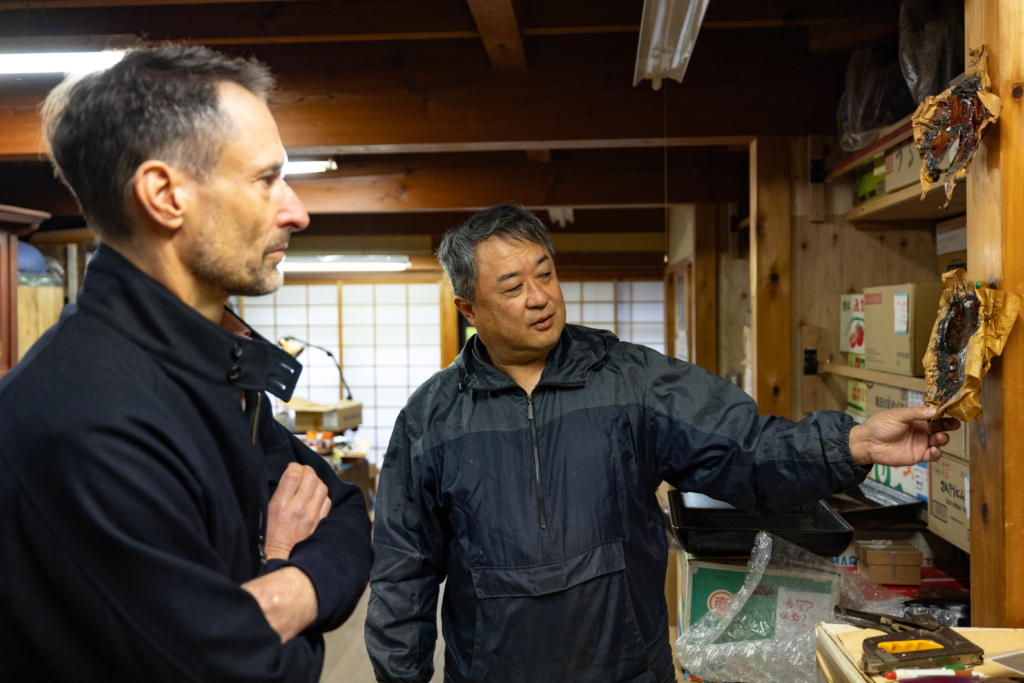
Challengers Weaving the Future of Wajima-nuri Ms. Omukai, of Koshudo and Mr. Kado, Lacquer Artist, Talk About Tradition and Innovation
Wajima-nuri is a traditional craft that Hokuriku is proud of. Its exquisite techniques and elegant designs are highly regarded both in Japan and abroad and have attracted many people. In this issue, we interviewed Ms. Omukai of Koshudo and Mr. Kado, a lacquer craftsman, about the appeal of Wajima-nuri, the difficulty of preserving the tradition, and their hopes for the future.
Tradition and Uniqueness of Wajima-nuri
A Story Spun by Repair
Wajima-nuri lacquerware is known as Japan’s representative lacquerware for its unique production process and beautiful finish. One of its characteristics is the division of labor. Koshudo does not have a workshop, but rather works in collaboration with its craftsmen to complete each piece.
“We do not have a workshop, so when we receive a request from a customer for something like this, we ask the craftsman who best fits the request. Wajima-nuri is divided into different processes, and the finished product will be of high quality because we have craftsmen who specialize in each process,” says Ms. Omukai.
The greatest appeal of Wajima-nuri lacquerware lies in its durability and its revival potential through repair. The most attractive feature of Wajima-nuri is that it can be repaired many times using advanced techniques, and once repaired, it will be as good as new.
Another appeal of Wajima-nuri is that it can be brought back to life again through repairs.
The quality of Wajima-nuri lacquerware depends on how beautifully it is repaired without leaving any marks, and the craftsmen’s skills are the key to its quality. The process of reviving vessels that have been used for many years through repair is a condensation of the craftsmen’s advanced skills.
One of the main attractions of Wajima-nuri is not only the product itself, but also the deepening of the relationship with the user through the repair process. The vessels that have been used for many years are revived through repairs and passed on to the next generation. Behind this is the concept of Wajima-nuri, “You have to use it to understand its value.
“In this new project to connect ceramic pieces, it is one thing to return them to their original form by kintsugi, but we dare not “completely repair” them to their original form and are conscious of bringing out the beauty created by chance through the techniques of Wajima. It depends on the skill of the craftsman,” says Ms. Omukai.
Lacquer Artist Mr. Kado’s Innovation and Originality
Lacquer artist Mr. Kado is opening new possibilities for Wajima-nuri by incorporating his own unique techniques while adhering to tradition. Mr. Kado’s workshop is characterized by improvisational techniques such as hand-painting and splashing lacquer to draw patterns.
“The technique of creating patterns by splashing urushi lacquer has an appealing coincidence. The expression changes from moment to moment, and no two pieces are exactly alike. Also, I am experimenting with a technique where I draw with my fingers without using tools. But it is difficult for ordinary people. There is the worry of getting a rash, and it often doesn’t turn out beautifully. Still, that accidental nature gives me an opportunity to create new expressions.”
Behind his creativity was his childhood involvement with lacquer culture. “I became familiar with the smell and feel of lacquer, and eating with lacquerware was a part of my daily life. I often went to the lacquer studio to play and watch the work being done.”
Mr. Kado also draws inspiration from nature and ordinary events in his daily life. He says, “I find inspiration in everything from stones and wrinkles of newspaper I find while hiking in the mountains to works of contemporary art,” revealing the wide range of his sensibilities. While respecting the traditions of Wajima-nuri, Mr. Kado’s attitude of exploring new ways of expression gives his works a unique brilliance.
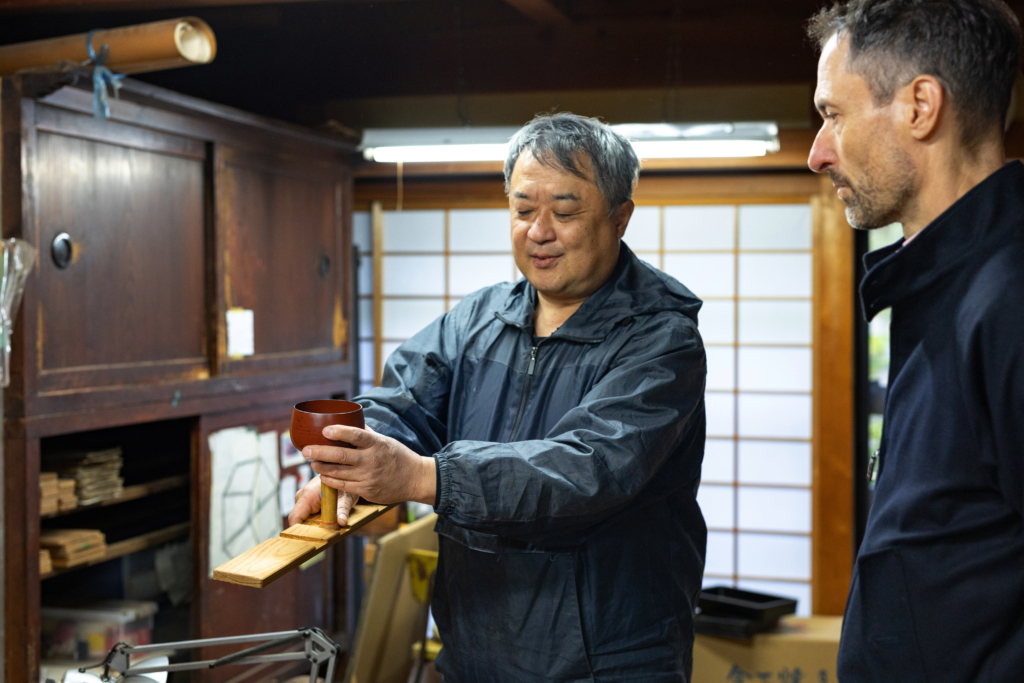
Passing on to the Next Generation and Challenges
An important theme for the future of traditional crafts is “passing them on to the next generation.” The Wajima-nuri industry is facing a serious shortage of successors due to the declining birthrate and changes in the industrial structure. This is also because making lacquerware requires advanced techniques and a long apprenticeship, as well as a heavy financial burden.
“It is important to increase opportunities to convey the appeal of lacquerware to the younger generation and to get them as interested in the craft as possible.” says Ms. Omukai.
“We help artists who have not yet made it to the public stage with their exhibitions and provide them with a place to showcase their work. When I see the joy on the artists’ faces when their work sells for the first time, I realize the role we play.”
Koshudo focuses on supporting the next generation by creating opportunities for young artists to present their work through planning and producing exhibitions.
On the other hand, Mr. Kado says, “It is difficult to nurture successors. For now, I would like to continue to create my own works and try to attract as much interest as possible by communicating the appeal of my work,” he says.
From his perspective as a creator, he is trying to show new values of Wajima-nuri through his works.
Koshudo and Mr. Kado have been in contact with each other for generations and have a deep relationship with trust.
The Kado family has a long history with us since the father of my husband’s generation, and since that time we have been holding exhibitions of Wajima lacquerware together through trial and error. We have a family relationship, and now that my husband’s generation has taken over, we are still working together with Mr. Kado to plan sales and exhibitions. I hope to continue this relationship with my son’s generation as well.” says Ms. Omukai.

Overcoming the Earthquake and Moving into the Future
The Noto Peninsula earthquake that occurred in early 2024 had a major impact on the Wajima lacquerware industry. Many workshops were damaged, and artisans were forced to work in temporary workshops.
“Many of the artisans are in temporary workshops, and Wajima as a tourist destination has also been damaged. The roads in the morning market are still in a bumpy state, and many houses are still damaged,” Ms. Omukai said of the current situation.
The earthquake has also triggered a movement to explore new possibilities for Wajima-nuri. An art project is being developed that utilizes ceramic pieces broken by the earthquake.
“I think that by using the broken pieces of pottery as they are, we can create a new form of expression. I feel it is important to leave the broken pieces as they are, without modifying them too much.”
In addition to utilizing the pieces as chopstick rests and art objects, they are also attempting to use them at dinner parties and tea ceremonies. These activities are a challenge to add new value to past works and connect them to the next generation.
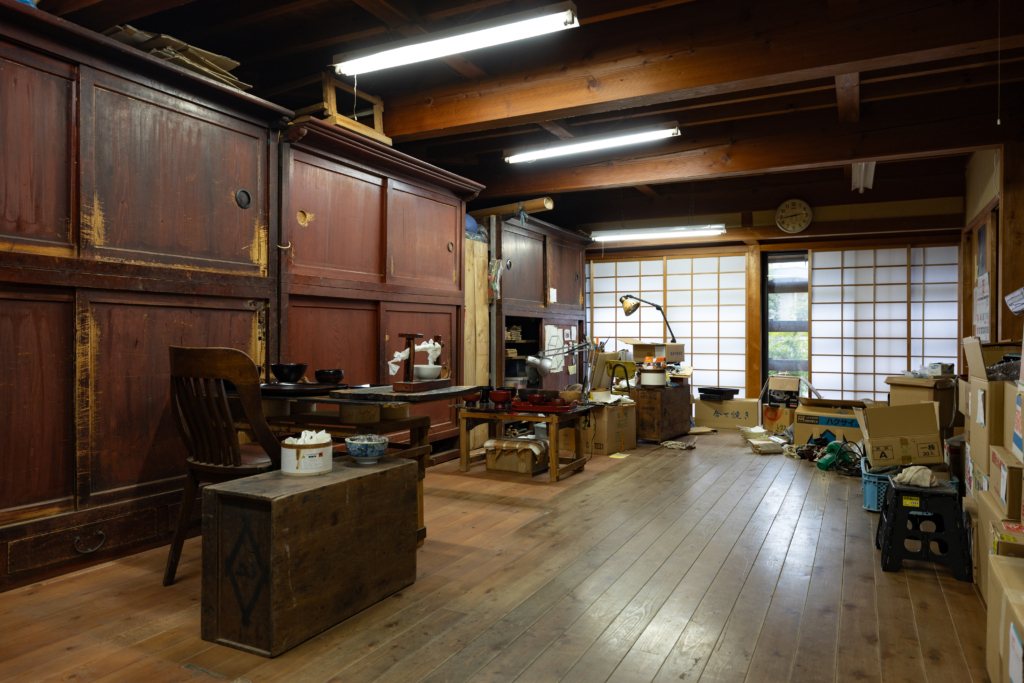
Proposing a Culture of Everyday Use of Wajima-nuri
Ms. Omukai emphasizes the importance of using Wajima-nuri in daily life, saying, “You can understand the beauty of Wajima-nuri only when you use it. Wajima-nuri tends to have an image of being a luxury item, but in fact, the charm of Wajima-nuri is that its beauty is enhanced as it is used.
Mr. Kado also says, “I want people to experience the warmth and texture of lacquerware in their daily lives. For example, when you hold a bowl in your hand, you can directly feel its lightness and the natural feel of the wood.” He hopes that the value of Wajima-nuri will be further enhanced in daily life.
“We fill the stacked boxes that have been handed down from generation to generation with handmade Osechi dishes for New Year’s, and host those who come to greet our guests. Today, fewer and fewer households use stacked boxes, but I want to keep this tradition alive.”
Ms. Omukai’s strong desire for tradition can be felt. Wajima-nuri stacked boxes are more than just containers; they symbolize family ties and local culture. When used with care on special occasions such as New Year’s, lacquerware becomes more than just a tool.
Ms. Omukai also organized an event for foreign tourists to experience serving a Buddhist vegetarian meal in Wajima-nuri lacquerware.
“About two years ago, when a visitor from England came to our restaurant, we organized an event in which we served Buddhist vegetarian meal using red Wajima-nuri plates and bowls,” she said. “They ate in a tatami room, sitting on the floor, and we ate with them wearing kimonos. They were vegans, so the vegetarian food was just right for them, and they were very pleased.”
Through the event, Wajima-nuri is also expected to serve as a bridge between different cultures.
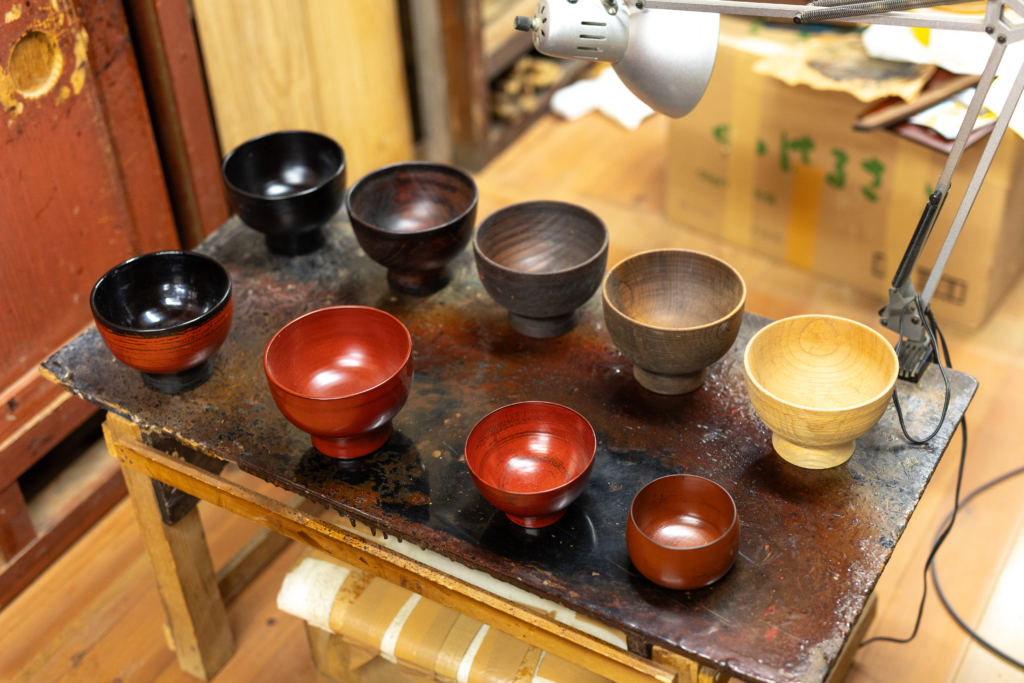
Prospects for the Future of Wajima-nuri
Possibilities Expanding Beyond Tradition and Innovation
Ms. Omukai describes the future of Wajima-nuri as follows. “The skills of each and every craftsman support Wajima-nuri. If even one process is missing, the product is not complete. I think it is necessary to strengthen the support system for the industry as a whole so that these techniques will not be lost. Of course, we should be proud of Wajima-nuri as a traditional industry, but it is also important to think about new designs and new ways of using Wajima-nuri.”
Mr. Kado also says, “I have been thinking about how to incorporate Wajima-nuri into modern life. There is no need to be bound by traditional forms, and I would like to create works with more free ideas. By doing so, I think we can create a new value of Wajima-nuri,” he said, showing his ambition for the future.
Wajima-nuri is a traditional craft with a history of several hundred years, but it continues to evolve even today. Behind this is the enthusiasm and challenge of its creators. The efforts of Koshudo and Mr. Kado show us once again the possibilities of Wajima-nuri.
Wajima-nuri aims at both preserving tradition and creating new values. Wajima-nuri, which aims to achieve both goals, is sure to continue to surprise and inspire.
Yuko Omukai
Born in Toyama Prefecture. She works as a producer specializing in Wajima-nuri. She joined Koshudo when she got married and started to support the tradition of Wajima-nuri as a member of the company.
She not only sells lacquerware, but also plans and produces lacquerware to serve as a bridge between craftsmen and customers and has helped many works to be introduced to the world. She also focuses on activities to support young artists and craftsmen and is dedicated to spreading the appeal of Wajima-nuri.
She is also developing an art project that combines ceramic pieces broken by the earthquake that struck the Noto Peninsula on New Year’s Day, 2024, with Wajima techniques, and has begun working toward new possibilities to utilize Wajima’s advanced technology.
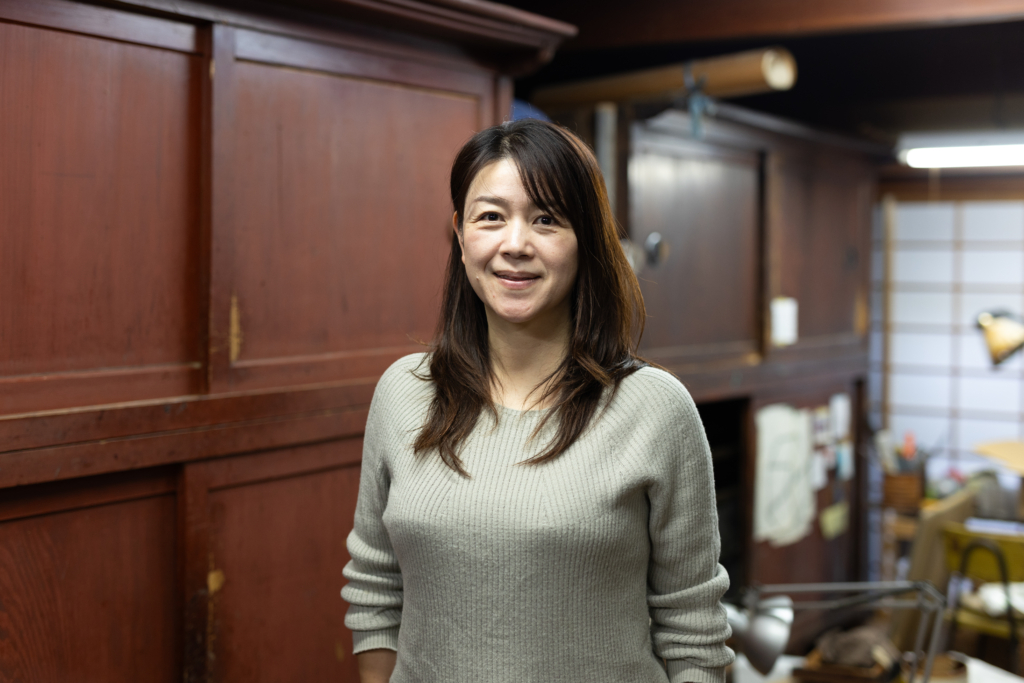
Kado Yui
He is a lacquer artist from Wajima and the representative of Kado Lacquer Studio. While based on the traditional Wajima-nuri techniques inherited from his father, Iizaburo, he pursues his own unique expression. The appeal of his work lies in his free thinking that transcends the boundaries of tradition, such as his use of improvisational techniques like drawing patterns with his fingers and taking advantage of chance by splashing the lacquer. He attracts a lot of attention as a key person who connects tradition and innovation.
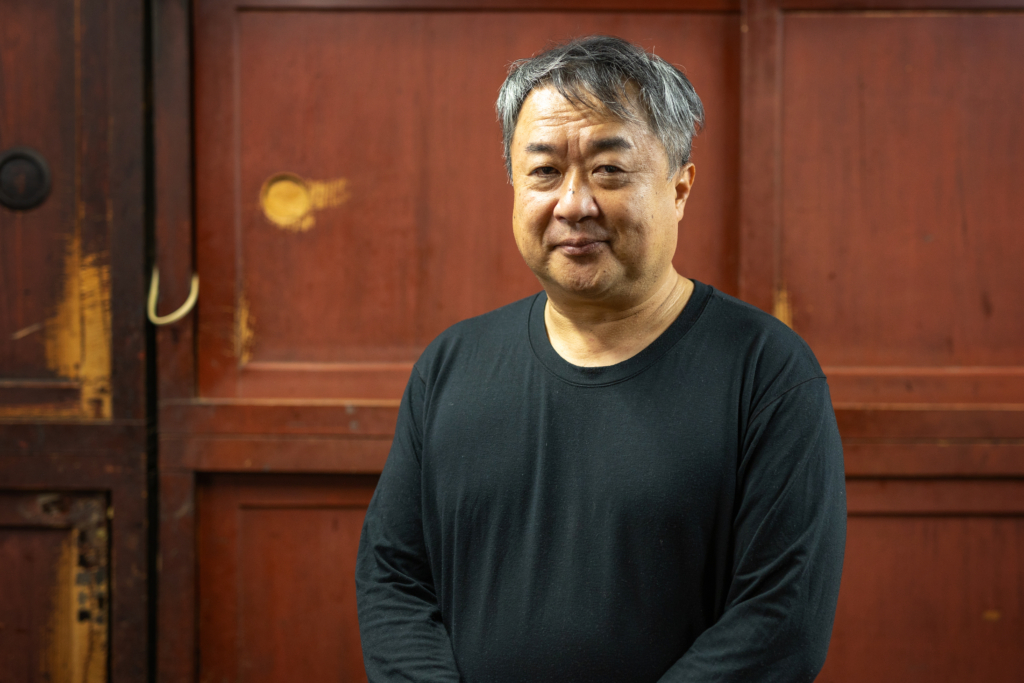
If you would like to get further into the world of Wajima-nuri, please see the following information
Special program to meet the lacquer craftsmen and their workshops who produce Wajima-nuri, a traditional craft that is the pride of Japan.
Highlights
・Special visit to the workshop of a Wajima-nuri lacquer craftsman.
・Observe the craftsmen at work and have the craftsmen themselves share their thoughts on the manufacturing process and their works.
Information
Price: from 4,000 yen per person
Participants: 1 to 6 people
Duration: about 1 hour
Included: Guided tour of Wajima-nuri craftsman’s workshop
Meeting: Michi-no-eki Wajima, Futtsu-kyomu (Roadside Station)
Language: Japanese (English interpreter can be arranged upon request)
For reservation inquiries, please click here.